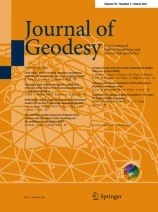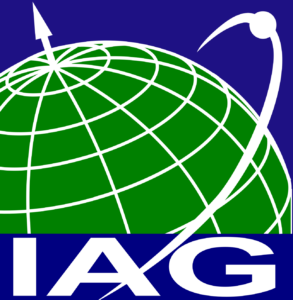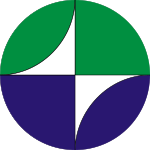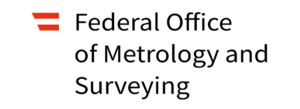IAG Publications at Springer
Journal of Geodesy
-
- Editor-in-Chief: Peiliang Xu
The Journal of Geodesy is an international, peer-reviewed journal covering the full spectrum of geodetic science. It publishes research on theoretical modeling, experimental results, and interpretations, along with review papers, short notes, and special issues from scientific events. Topics include positioning, reference frames, geodetic networks, space geodesy, remote sensing, gravity fields, and geodynamics.
In addition to research articles, the IAG Newsletter is published monthly on this website and as an article in the Journal of Geodesy – IAG Newsletter.
IAG Symposia – Book Series
- Editor-in-Chief: Jeff Freymueller, Michigan State University, USA
- Co-Editor-in-Chief: Laura Sánchez, TU München, Germany
This book series is composed of peer-reviewed proceedings of selected symposia organized by the International Association of Geodesy. It deals with geodetic theory and with topics related to Geodesy as applied to the Earth Sciences: terrestrial reference frame, Earth gravity field, Geodynamics and Earth rotation, Positioning and engineering applications. Since 2019, books have been published open access. Books and papers can be accessed via the Springer website. The complete list of published volumes is also available there.
All meetings organized or sponsored by the IAG or IAG elements (Commissions, Inter-Commission Committees, etc) should consider whether to publish a volume, and should contact the Editor-in-Chief and the IAG Secretary General well in advance of their meeting. There are financial considerations; these and other guidelines are in the guidelines for organizers document.
Information for Authors
Regular contributions can be up to 8 pages including the bibliography, while invited or solicited submissions can be up to 10 pages including the bibliography. Templates are available for MS Word and for LaTeX. For review, we request that authors submit their manuscript using 1.5 space or double-spaced line spacing.
As a rough guideline, authors should know that a page full of text will be approximately 5500 characters, and a figure of 85 mm x 85 mm is equivalent to 1200 characters. We recommend using the templates. The dummy text and figures in the MS Word template result in an 8-page paper, the standard length limit. To preview what it would look like in final form, you can select the text and switch from double-spaced to single-spaced.






